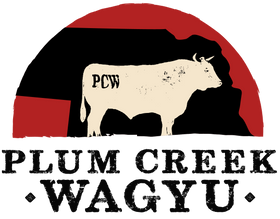Wagyu Beef vs. Kobe Beef: What’s the Difference?
Wagyu beef and Kobe beef are often used interchangeably in the culinary world, but they’re not quite the same. Both represent some of the finest, most luxurious beef you can enjoy, but understanding the key differences between them can help elevate your dining experience and ensure you’re getting exactly what you’re paying for.
What Is Wagyu Beef?
Wagyu refers to a specific breed of cattle, originating from Japan, known for its extraordinary marbling and rich flavor. The term "Wagyu" literally translates to "Japanese cow" (with "Wa" meaning Japanese and "gyu" meaning cow), and it encompasses several breeds, including the Japanese Black, Japanese Brown, Japanese Polled, and Japanese Shorthorn. The most well-known of these breeds is the Japanese Black, which is responsible for producing the highly marbled, melt-in-your-mouth beef prized worldwide.
Wagyu beef can be raised outside Japan and is often produced in countries like the U.S., Australia, and Canada. However, true Wagyu beef is known for its impeccable marbling, tenderness, and a distinct buttery flavor that comes from its high fat content.
What Is Kobe Beef?
Kobe beef is a specific type of Wagyu beef that comes from the Tajima strain of Japanese Black cattle, which are raised in the Hyogo Prefecture of Japan, with Kobe being its capital city. The unique environment, care, and strict standards in this region contribute to the rare and highly prized nature of Kobe beef.
To be officially recognized as Kobe beef, the cattle must meet rigorous criteria set by the Kobe Beef Marketing and Distribution Promotion Association, including being born and raised in the Hyogo Prefecture, being processed in a licensed facility, and meeting high standards for marbling, weight, and meat quality. As a result, Kobe beef is a subset of Wagyu beef, but not all Wagyu beef is Kobe beef.
Key Differences Between Wagyu and Kobe Beef
-
Geographic Origin:
-
Wagyu refers to beef from a variety of cattle breeds raised in Japan or abroad.
-
Kobe is specifically from the Tajima strain of Japanese Black cattle raised in the Hyogo Prefecture.
-
-
Strict Standards:
-
Wagyu can be raised in various countries and may vary in quality.
-
Kobe beef must meet strict criteria in both the quality of the meat and the region where it's raised.
-
-
Marbling and Flavor:
-
Both Wagyu and Kobe beef are known for their incredible marbling, but Kobe beef is often regarded as the gold standard, with an even higher fat content and a more buttery texture.
-
-
Price and Rarity:
-
Wagyu beef can be expensive, but it’s more readily available than Kobe beef.
-
Kobe beef is incredibly rare, making it one of the most expensive meats in the world due to the specific regulations and limited availability.
-
-
Production and Availability:
-
Wagyu beef is produced in many countries, including Japan, the U.S., Australia, and Canada.
-
Kobe beef is much rarer outside Japan and is limited to a select number of farms in the Hyogo Prefecture.
-
Why the Confusion?
The confusion between Wagyu and Kobe beef stems from their overlapping qualities. Since Kobe beef is a type of Wagyu, people often use the names interchangeably. However, the main distinction is that while all Kobe beef is Wagyu, not all Wagyu beef is Kobe. If you’re looking for the true, luxurious experience, it’s important to know whether the beef you're purchasing is truly Kobe or just Wagyu beef from another region.
Conclusion: Which One Should You Choose?
Whether you choose Wagyu or Kobe beef depends on what you’re seeking in your dining experience. If you're looking for the absolute pinnacle of marbling and flavor, Kobe beef will give you an unforgettable experience—but be prepared for a hefty price tag. If you want high-quality, delicious beef with incredible marbling but at a more accessible price point, Wagyu beef is an excellent option.
At Plum Creek Wagyu, we are proud to offer premium Wagyu beef from our family-owned farm. Whether you're trying Wagyu for the first time or looking for a special cut to impress your guests, we ensure every bite is as tender and flavorful as possible.
Related Posts
10 Quick and Easy Wagyu Beef Recipes for Busy Weeknights
From Ranch to Plate: Understanding the Wagyu Beef Supply Chain
Wagyu for Every Occasion: Perfect Cuts for Different Events
Sustainability in Wagyu Ranching: Our Commitment to the Environment
Pairing Wagyu with Local Nebraska Ingredients: A Farm-to-Table Experience
Nebraska is a state known for its rich agricultural heritage, offering a bountiful array of fresh produce, meats, and artisanal foods that reflect its commitment to high-quality, locally sourced ingredients. As a state deeply rooted in farming and ranching, it’s only natural that the exceptional Wagyu beef from Plum Creek Wagyu would pair perfectly with the best Nebraska has to offer.
In this post, we’ll explore how to combine the luxurious marbling of Wagyu with locally grown vegetables, grains, cheeses, and other unique ingredients to create a farm-to-table dining experience that celebrates both Nebraska’s culinary traditions and Wagyu's premium flavors.
A Beginner's Guide to Cooking Wagyu Beef at Home
Wagyu beef is a luxurious treat, known for its rich marbling, melt-in-your-mouth tenderness, and deep, savory flavor. Whether you’ve recently purchased your first Wagyu steak or you’re considering giving it a try, cooking this high-quality beef at home can be an exciting experience. In this beginner’s guide, we’ll offer simple recipes, helpful tips, and essential techniques to ensure you get the most out of your Wagyu beef purchase, making every meal a memorable occasion.







